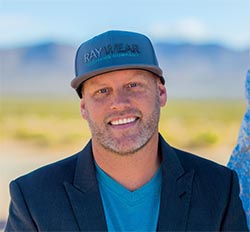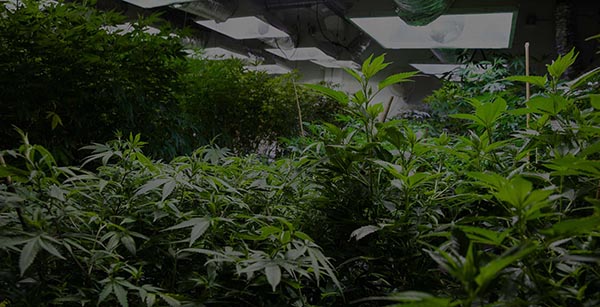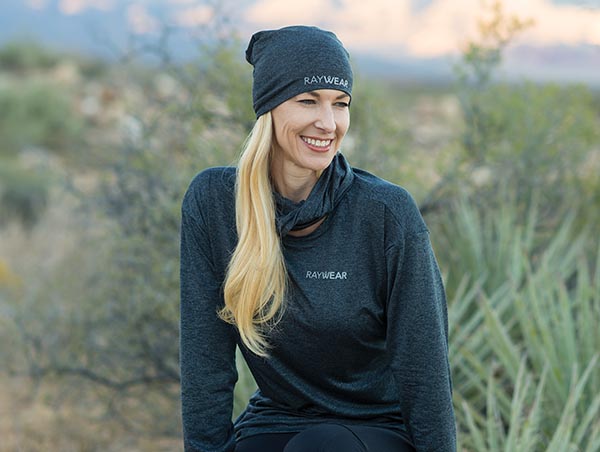RayWear’s patent-pending fabrics claim to offer the most complete protection against the full radiation spectrum endured by today’s growers. Its gear provides up to 99% visible light radiation reduction, significant reduction in infrared (IR) radiation, and it has a rating of 50+ UPF (ultraviolet protection factor), the highest rating any fabric can achieve. In this interview, Daniel Jordan explains why he founded RayWear Clothing Company, why their products are different (and important), and what the future holds.
WhatTheyThink: Daniel, tell us a little about RayWear Clothing Company and why you founded it.
 Daniel Jordan: Let me start with my personal story, which drove me to start this business. For my family, 2016 was an extremely difficult year. My grandmother lost her battle with cancer, and just months before she passed, both my father and grandfather were diagnosed with cancer. You don’t really understand the impact of cancer until it affects you personally. It changed everything for me. I was living in Las Vegas. I immediately packed my car and drove to San Diego where my family lives. At the time, I was also in a partnership with a dermatologist. We were working to develop a specialized clothing line to protect workers from harmful light radiation, which we know causes cancer. That partnership didn’t work out, but I was able to take those ideas and bring them to fruition with RayWear Clothing Company.
Daniel Jordan: Let me start with my personal story, which drove me to start this business. For my family, 2016 was an extremely difficult year. My grandmother lost her battle with cancer, and just months before she passed, both my father and grandfather were diagnosed with cancer. You don’t really understand the impact of cancer until it affects you personally. It changed everything for me. I was living in Las Vegas. I immediately packed my car and drove to San Diego where my family lives. At the time, I was also in a partnership with a dermatologist. We were working to develop a specialized clothing line to protect workers from harmful light radiation, which we know causes cancer. That partnership didn’t work out, but I was able to take those ideas and bring them to fruition with RayWear Clothing Company.
WTT: Why do you suppose this issue hasn’t been addressed before in the way you have approached it?
DJ: As regulations relative to cannabis have evolved across the U.S. and around the globe, there has been great focus placed on the regulatory and financial aspects of the business, but the health and safety of workers has not received much attention. In part, this is due to the lack of scientific data and studies done showing these light sources—visible light, ultraviolet, and IR—have a negative effect on humans. But we all understand how damaging extended exposure to sunlight can be. We also all understand the effects of extended exposure in a tanning bed. Neither one is smart; and although there haven’t been enough studies done on the long-term effects of extended exposure to grow lights, common sense would tell us to take precautions to protect ourselves. It took 50 years to learn that cigarettes were harmful. Let’s not make that mistake in cannabis.
Unfortunately to date, big corporations involved in the cannabis industry are not yet focusing on employee health and workplace safety. Without effective pressure or regulation, businesses will simply wait. I don’t want to wait until these workers and their families have to go through something like what my family went through. We need to recognize the problem, and we need an effective solution—RayWear is that solution.
WTT: What percentage of cannabis is cultivated under grow lights rather than outdoors?
DJ: Most of the cultivation in the United States is moving indoors.

WTT: How did you go about determining that this would be a good business?
DJ: We spent a lot of time talking with dermatologists, radiation specialists, and other medical doctors, and it was an eye opener. They all agreed that there was an inherent danger here, even though there is a lack of effective studies.
WTT: There is some UV clothing available on the market. What makes yours different?
DJ: As I stated, UV radiation is only part of the problem. Just because something is protecting you in one spectrum doesn’t mean it protects you from them all. That’s part of what we learned from our research and all the medical professionals we spoke with. We needed to find a fabric that could address all three—UV, visible and IR—and finding that was a real challenge. We had a lot of failures. But ultimately, we were able to find just the right fabric blend. It’s light and breathable, yet offers the highest level of protection currently available.

WTT: How do you know it offers the right protection?
DJ: We’ve had all our fabrics tested by an independent third-party laboratory. This lab is a global leader offering light testing services for over 50 years. Once I explained to them what we were doing and why, they were totally on board with assisting us.
WTT: Once you found the fabric, what was next?
DJ: We had to decide how to create and package the product line. A lot of what you see in grow operations are in compliance with sanitation standards—coveralls, scrubs, all those things are protecting the plant from the worker, not the worker from what can be a very harsh environment. We had to figure out how to best fit within those standards. I appreciate that the cultivation rooms are clean; they don’t want to bring in outside contaminants. Our gear needed to work in concert with what grow operations were already doing and not disturb it. We didn’t want to make scrubs and coveralls. We wanted to make garments better suited for our fabrics, garments that were appealing to the workers which could easily and comfortably be worn under scrubs and coveralls if needed.
WTT: So what are you making?
DJ: Shirts, long and short-sleeved; pullovers and hoodies; as well as beanies and accessories like face guards and light radiation safety glasses. All our garments are made in America by American workers. Our clothing is designed and manufactured in California.

WTT: Where do your designs come from?
DJ: My original partner was a dermatologist with a clothing background, so that provided some great insight. Once I was on my own, I simply did things the way I wanted to. I knew what I liked and what I wanted to design from a user perspective. I went through my wardrobe and picked the items I liked. I took them to a manufacturer and together we created the patterns. Plus, I also had a lot of conversations with growers about what they would and wouldn’t wear. That helped to guide me as we selected and designed the line.
WTT: No pants?
DJ: No. We get asked about that all the time. But our research shows that the significant potential risk area is above the waist, since most of the grow platforms are elevated. I don’t want growers wasting money on items that are not truly needed.
WTT: What is your focus now?
DJ: It’s been primarily an educational effort so far. Because of the lack of scientific data on this topic, we’ve needed to educate the market and its workers about the potential dangers. That’s been our primary focus. We go to a lot of conferences and conventions. I have grower friends that have skin cancer and others that don’t know why their eyes hurt. This is the educational challenge we have. It’s been two years of grinding, going to all the conventions to get us to where we are now. Sometimes I feel like a hip-hop rapper in the parking lot trying to sell CDs. As a small business owner, we don’t have a lot of resources. But with our online store now open, I will continue to educate the market. However, now I’m also talking about our solutions.
WTT: So what is your key message to the industry?
DJ: The cannabis industry is the Wild West, and there is so much we still don’t know. It is a strange dichotomy with the industry advocating for the medical benefits of cannabis, but then not caring about the workers who grow the plants. To me that is disingenuous. Let’s make the safety of the person harvesting the plant as important as the plant itself. Growing is their passion; protecting them is ours! That’s our mission.










Discussion
Join the discussion Sign In or Become a Member, doing so is simple and free